Introducing the latest myCWT product and service enhancements
Building on our digital, omnichannel myCWT platform, our new products and services will simplify travel management for you and your employees – anytime, anywhere, anyhow.
Note: Featured services may not be available in your country at this time. Please reach out to your CWT representative for more details.
Hear from Chief Product Officer, Erica Antony as she shares the key product highlights of 2024, along with the key areas driving innovation.
-

2040: Baseline, Boom or Bust
As we enter an era of rapid transformation and unprecedented challenges, it is essential for travel managers, meeting & event planners, and corporate decision-makers to look ahead and frame our current strategic thinking with a clear vision of the future. Business travel and meetings and events (M&E) are poised for significant change over the next decade and a half, driven by a complex interplay of sustainability goals, technological advancements, evolving work models, and geopolitical dynamics.
In this paper to mark the 10th anniversary of our Global Business Travel Forecast, we explore, for the first time, a long-term vision of the future and potential trajectories through three distinct scenarios, each offering insights into how these forces should affect policy-making, budgeting and priorities. By examining these scenarios, we can better understand the diverse possibilities that lie ahead and the strategic imperatives required to thrive in each potential future.
Based on trajectory data analysis and interviews with industry leaders, behaviorists and climate tech founders, this forward-looking approach enables us to anticipate changes, strengthen our strategies, and make informed decisions that align long-term objectives. It is through this lens of foresight and adaptability that we can build resilience, seize opportunities, and navigate the complexities of the future.
We invite you to reflect on the insights presented, and consider how your organization can prepare for the opportunities and challenges that lie ahead. Together we can ensure that travel and meetings remain catalysts for growth, scalability and sustainable practices.
- Scenario development is both an art and a science
- Megatrends Shaping the Future of Business Travel, Meetings and Events
- Sustainability goals the new crux of corporate policy
- Technology Revolutionizes Travel Management
- Modern work models spark new travel patterns
- Changing demographics open doors to new opportunities
- Three Scenarios: Base case, boom and bust
- Future-proofing strategies

-

CWT GBTA Global business travel forecast 2025
When it comes to pricing, global business travel has finally reached an enduring, higher baseline. Prices will continue to rise in 2025, but only moderately, so expect a period of normalized growth.
However, this pricing environment, one of marginal gains and price regularity, is fragile. Global leisure travel has now realized a lot of its pent-up demand, while corporate travel has been resurgent, with 2024 edging at preCovid levels.
There are many factors at play, whether its volatile oil prices, labor costs and constraints, inflationary pressures, and geopolitical factors. As this elevated baseline edges upwards, albeit marginally, travel budgets will come under increased scrutiny, especially as travel patterns and attitudes change.
It’s why business travel can’t be viewed in a silo, and the true value to an organization must be fully realized. This forecast can help with those calculations.

-

Capitalize on emerging technologies in corporate travel
Technological advancements are accelerating at an unprecedented pace. How will emerging innovations like Generative AI, blockchain, and self-sovereign identity (SSI) transform corporate travel?
BTN and CWT probed global CEOs, travel managers, industry consultants and tech experts on the promises, questions, and expectations these innovations raise and how they are set to reshape traveler experience, cost control and service delivery in corporate travel and events.
Download and discover
- The technologies that will have the greatest impact on corporate travel in the next 2-5 years
- How these emerging technologies are poised to control costs, enhance service and security, and boost efficiency
- The critical challenges, opportunities, risks and roadblocks each innovation raises
- What travel managers, buyers and experts anticipate from these innovations

-

São Paulo – Uncover Brazil’s vibrant and booming metropolis
São Paulo’s vibrant metropolis is an alpha of other global cities, with a booming financial center, there is no doubt it is one of the richest Brazilian states. Home to over 20 million proud Paulistanos, it is a city that is culture rich, waiting to be unfolded. Unleashing the great art-house cinemas, immersive and experimental experience, São Paulo will leave you feeling exhilarated and inspired. The Paulistanos have created a foodie heaven filled with world-renowned bistros and gourmet restaurants, you won’t be leaving hungry. São Paulo is filled with endless possibilities, including some fantastic meetings, events and leisure opportunities, creating unique and innovative ‘bleisure’ trips to Brazil.
The trendiest venues and hotels in Brazil
São Paulo is home to some of the most exquisite hotels and venues to host your next meeting or event. Casa Petra, Sala São Paulo and Espaço JK are a few of the famous and unique event venues in São Paulo. Sala São Paulo is also known as a cultural center, which is located in Júlio Prestes Train Station in the old north central section of the city. The venue is often used for concerts as it can hold up to 1,500 seated attendees at once. São Paulo has an array of luxury and business focused hotels that accommodate for all business meetings and large scale event requirements. With big names such as Grand Hyatt, Hilton, Sheraton present alongside other leading hotels of the world, including Tivoli and other design focused hotels such as Hotel Emiliano, there is a venue suited to all kinds of business requirements.
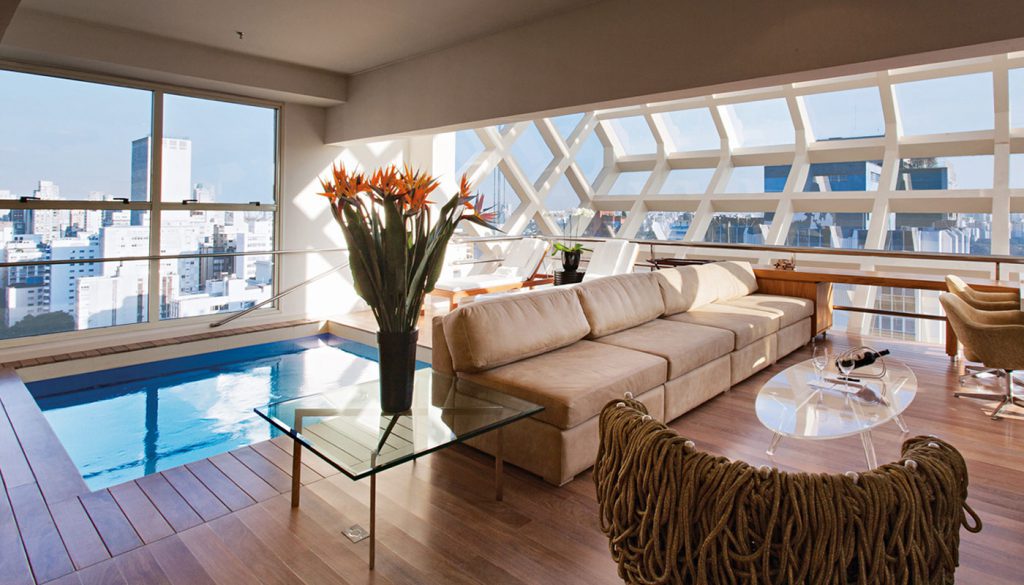
Join in the fun São Paulo style!
There is plenty of things to see and do in São Paulo. Discovering the exhilarating, fun city should be your number one priority, besides attending a meeting or event, of course. The Ibira Walking Tour is a fantastic way to see São Paulo’s much loved park by foot. Discover all the fantastic sculptures, museums and monuments that are full of history, culture and art. Also, discover the nearby urban beach, walking around beautiful lakes, taking it nature at its best.
Another worthwhile tour is the City of Contrasts, where you can discover the fascinating history behind Brazilian culture and history. Team up with one of the guides and discover the Burle Marx Park, the incredible wave-like facade of Casa de Pedra and mosaic features from the legendary Catalan architect, Antoni Gaudi. It makes for a perfect photo opportunity!
Visit the Parque Estadual da Cantareira, one of the world’s biggest urban rain forests. It’s well worth the visit, getting up close and personal with some of the local monkeys and birds. There is also a fantastic view of the city if you get high enough up the slopes of Serra Cantareira.
Mercado Municipal de São Paulo, is the biggest and most varied market, filled with delicious juicy exotic fruits, tapas, meats, herbs and spices. When visiting, be sure to try a Mortadella (heat cured pork) sandwich or a Pastel de Bacalhau, made with potatoes, cod, eggs, onion and parsley for lunch.
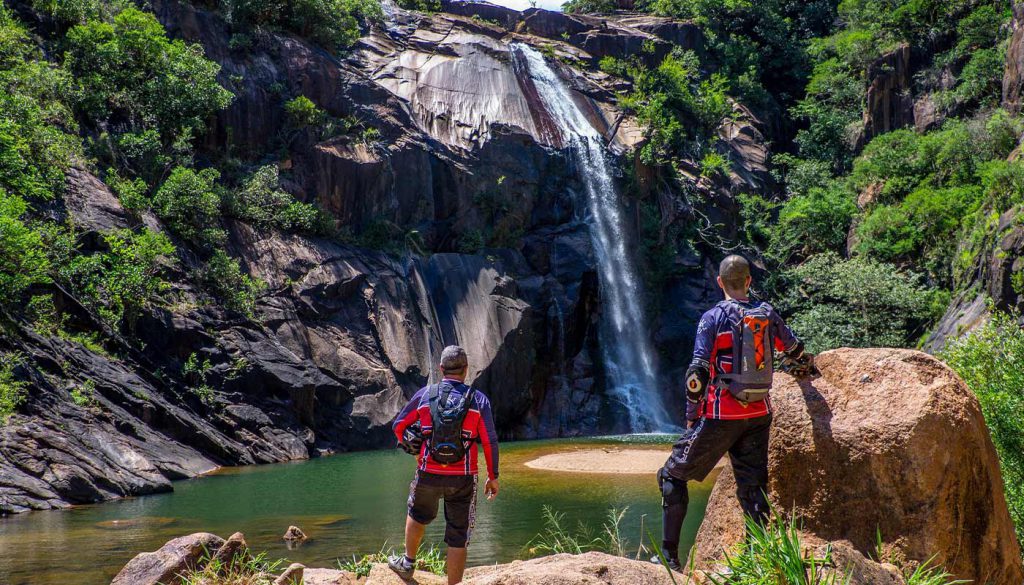
Authentic Brazilian food, like no other
Brazilian food is a mix of traditional cooking practices and a mix of other cultural influences. It’s mainly characterized by African, Japanese and European influences, with a touch of American and Indian. The city’s eclectic mix of native and international citizens welcomed a range of ingredients and spices over the years that contributed to what is known as the Brazilian cuisine now. With thousands of restaurants that occupy the city, there is something to fit every craving, be it something obscure and complex traditional dish or a simple dish, like pizza. There are many popular Brazilian dishes found that are a must try while visiting. Look out for “Tutu a Mineira” which is mashed beans, served with roasted pork loin, cabbage and rice. Simple light bites such as “Pao de Queijo” which is cheese bread and “Polenta” which is baked dough made from corn flour or “Churrasco” which is high quality barbecued meat. Perhaps you may be interested in trying “Virada Paulista” which is rice, beans and banana (interesting mix!) served with meat and “Feijoada”, a stew of black beans and a variety of different meats, served with kale and rice. If you still have room for something after dinner, try a “pastel” which is a fried pie with various sweet and savory fillings such as cheese, guava and condensed milk.
We recommend a few restaurants to try for post-meeting team dinners when you are visiting São Paulo, Try D.O.M. for innovative dishes and Haute cuisine. Maní is one of the Top 50 best restaurants in Latin America, which serves some of the finest Brazilian dishes. TUJU is a two Michelin starred restaurant bringing a sophisticated simplicity to dining in Brazil, with a specialty dish of Sea urchin, squash, almond oil, seaweed and key lime. Ristorantino is an Italian restaurant, serving some the best Italian dishes, especially the risotto with lemon cream.
It’s time to take your meeting or event to São Paulo.
Insider insights

Rodrigo, Sales Manager, CWT Meetings & Events, Brazil
“São Paulo is a dynamic city, jam-packed and open to diversity – it is difficult to define it in one word. Multicultural and multifaceted, it has a pulse that beats 24 hours a day, thanks to energetic locals and discerning visitors who are always in search of the latest trends. It’s the most populous city in Brazil, the Americas, and the entire southern hemisphere. Its total population ranks seventh in the world, and yet it’s been deemed the 14th most globalized city on the planet. Sampa, as its residents fondly refer to it, has evolved into a vital hub for the country’s economic, scientific, political, and cultural movements and can host all sorts of MICE programs affordable to all tastes and demographics.”
-

Just what is it with all these New Year resolutions?
So this is Christmas,
And what have you done?
Another year over,
And a new one just begun.So sings John Lennon around this time of year on almost every radio station into which you can tune.
But just why do we ruminate on what we have achieved in the previous twelve months, and feel the need to look forward and make a fresh start?
According to the internet (I must use it less and my brain more), in ancient Babylon, people promised their gods that they would repay all debts and return borrowed goods. The Romans made similar entreaties, but to only one specific god – Janus (from whom January gets its name), and medieval knights renewed their chivalric vows at the start of each year.
Many religions have incorporated periods of reflection around the year-end.
Regardless of your spiritual orientation, it is a chance to look again at making self-improvements. For those considering what to do, here’s a list of the most common New Year Resolutions.
- Eat better/lose weight
- Take more exercise
- Give up a bad habit (smoking and drinking are the most common)
- Better manage your personal finances (saving, budgeting, etc)
- Improve yourself (with a new skill or hobby)
- Read more books
- Spend more time with those you love
- Travel more
- Get a new job
- Make no new resolution
Regardless of your chosen inspiration, I like to think that we all want another chance to be the very best person that we possibly can, so good luck, happy new year, and here’s to twelve months of fulfilled promise.
-

Top tips for effective networking from Íñigo Montoya
“Hello. My name is Íñigo Montoya. You killed my father. Prepare to die.”
It’s the holiday season, the week for watching cult movies and eating chocolate. It’s also the week for pondering how to improve your business skills in 2019.
You may recognize the above quote from 80’s flick The Princess Bride repeated throughout the film by Íñigo Montoya (or you might have thought the blog page was hacked).
This iconic sentence was revived recently and made into a meme. According to Montoya, the four steps to triumph in any social interaction are:
- Polite greeting.
- Name.
- Relevant personal link.
- Manage expectations.
Making an impression is an art that’s hard to master. Montoya has a point but he’s not the smoothest diplomat. Here are some more tips to help you shine and make the most of your business and personal interactions.
- Mind your body language – The general belief is that 55% of communication is non-verbal so make sure you adopt a relaxed and open posture. Avoid crossing arms and legs and remember – as PRs say to their clients facing a scandal – “teeth, teeth, teeth.” An authentic smile is your business card.
- Be culturally sensitive – If you are traveling to another country or mingling with people from all over the world, learn basic local etiquette. You want to make sure you respect personal space, know if you need to kiss people one, two, three or even four times, shake hands or bow.
- Listen intently – Avoid overwhelming the other person with your pitch and the temptation to interrupt conversation to add your anecdotes unless you’re certain the other person has finished. Be genuinely interested in your new acquaintance and listen. Be open-minded and stay focused.
- Mirror – A great way to make someone else comfortable is to subtly mirror their body language and even their words. You will make them comfortable and they will be sure you have understood. When we feel we’ve been truly heard, we’re putty in anyone’s hands.
- Follow up – If your conversation went well and you agree to send something or even if you just exchange contact details, follow up as soon as possible, even if it’s just to say how great it was to meet them.
These tips will make you unforgettable but if you meet anyone with six fingers disregard them and defend your honor.
Do you have networking tips of your own? Let us know.
-
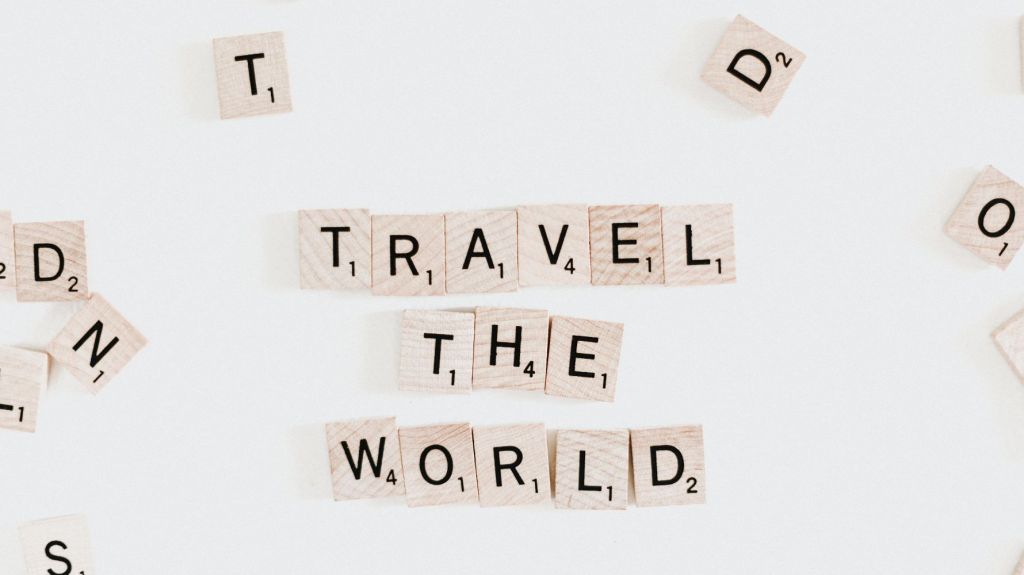
Travelese for Beginners – Decoding the language of corporate travel
If you just started a career as a procurement manager or your company’s travel budget was assigned to you for 2019, you might be feeling overwhelmed by the baffling amount of acronyms synonymous with the business travel industry.
Or you’re playing a festive game of Scrabble and have spare letters to get rid of.
At first glance, the foreign language seems like your own but then, when you listen closely, you realize you can’t understand half of the worlds.
The same happens when you read your emails. They tend to be teeming with three letters codes, in all caps… Have you been recruited by the CIA without realizing it? Or worse. Are you suffering from a neurological disorder?
Fear no more. Like the characters of the Danish Dogma movie ‘Italiensk for Begyndere’, you might just need someone to help you confront the gibberish those of us who have been in the industry forever tend to mumble to each other.
Let me decode some of the words we use. The good news is there are plenty of them that will be understood by everybody in the industry, no matter where they are based or their mother tongue. The bad news is there are plenty exclusive to your own language too. Crazy, eh? Hang on in there! Soon you will become fluent in Travelese.
Airport codes – Why write ‘Singapore’ when you can write SIN? “That’s easy,” you think, “just take the three first letters of the city.” Well, sometimes that is the case, but what if I put EZE or YYZ? Do you know which airports I’m talking about? Aeropuerto Internacional Ministro Pistarini de Ezeiza in Buenos Aires and Pearson International Airport in Toronto. As you can see, no room for guessing here.
Tools – Let me start with GDSs, or Global Distribution Systems. Sabre, Amadeus, and Travelport are the main ones. These computerized systems enable transactions between travel industry providers like airlines, hotels, car rental companies, and agencies. They allow travel consultants to compare fares effectively and make reservations. Using them will require you to learn another language altogether, and I can tell you it is not easy.
Then we have the OBTs, or online booking tools. They have an intuitive interface that allows your travelers to make their own reservations at their convenience without the need to decipher GDS codes.
Reservations. The PNR (passenger name record)gathers the personal information of a traveler and his/her itinerary. Each PNR has a record locator, normally a six-character code, or reservation code.
Agencies – TMCs (travel management companies) like CWT, not only book services but also provide consultancy services and reporting tools to help companies build an effective travel program. OTAs (online travel agencies) use the internet to provide their booking services through a website. DMCs (destination management companies), on the other hand, are those with extensive local knowledge, expertise and resources, that specialize in the design and implementation of MICE (meetings, incentives, conferences and exhibitions). Not rodents.
Hospitality – The acronyms here are endless. The most confusing one for a neophyte might be BAR. We are not talking about where to order a drink – although you might need one by now – but about the best available rate. ADR (average daily rate) or ARR (average room rate), APR (average published rate), LOS (length of stay), MAR (minimum acceptable rate), SGL (single room), DBL (double room), SV (sea view hotel room), OB/RO (accommodation without meals) BB (breakfast only), HB (half board regime) and FB (full board) are some of the most common ones you will encounter. See you at the bar.
Air Travel – If you want to feel dizzy, read the Wikipedia entry about fare basis code. It will give you a hint of the complexity travel agents handle. Let’s take it easy and explore instead some of the meal codes: AVML (vegetarian Hindu meal), BLML (bland meal, not to be mistaken with BBML (baby meal), DBML (diabetic meal), GFML (gluten free), KSML (Kosher), NFML (no fish), RVML (vegetarian raw meal) are some.
I hope you find this introduction to ‘Travelese’ useful. Have you come across an acronym you want us to decipher?
-

Rest for Success – 9 essentials for an enjoyable stay
If you read our previous blog where we asked what you value most from an airline, the next logical question for travelers is, ‘what do you value from a hotel?’
While away our hotel is our home, It’s important that it offers a certain level of comfort. But what is your definition of comfort? Here are some factors you might value most:
- Cleanliness – You can be as frugal in your demands as a Shaolin monk, but you can’t stand the sight of dust or dodgy looking stains.
- Water pressure and temperature – Even in the most glamorous hotels, this can be an issue. You want to be able to feel the water all over your body – not just a trickle on your right knee – and wash your hair in five minutes. You also want to be able to select the right temperature. Can there be a middle ground between Arctic and boiling.
- Location – You can be the type of person that doesn’t care to stay in a godforsaken part of the city as long as it is near to your meetings’ location or, on the other hand, you might be looking for a central location near attractions and restaurants so you can enjoy your free time after a hard day at work.
- Room service – You might prefer to have a quiet night in catching up on emails or just chilling in your room so, for you, it is imperative that more is on offer in this regard than a sad vending machine at the end of the corridor.
- Laundry service and ironing kit in the room – You like to dress for success. Your clothes need to be ironed to perfection after they’ve been in your suitcase for hours. That is why the first thing you do when entering your room is open the wardrobe and look for the ironing board, or the phone for urgent laundry service.
- Coffee and tea – You are powered by caffeine, so you need a hot drink on hand at all times.
- Pillow menu – If you think I’m not serious, let me tell you that I know someone who travels with her pillow everywhere she goes. Hard as nails or soft as a cloud, you need options.
- Gym facilities – You are a believer in Nike’s motto ‘no pressure, no diamonds’, so you want to make sure that you can keep up with your exercise routine while you are away.
- Simplicity – State-of-the-art design and technology are awesome, but you really want to be able to get around the light switches, faucets, air-conditioning and the blinds without calling reception begging for help. Let’s not even discuss the toilets in Tokyo.
Any other item you would add to the list? As usual, we’d love to hear from you.
- Cleanliness – You can be as frugal in your demands as a Shaolin monk, but you can’t stand the sight of dust or dodgy looking stains.
-

Painless payment – Can corporate cards contribute to a great travel policy?
According to one of our latest pieces of research, six in ten global business travelers have a corporate credit card but only four in ten use it regularly when traveling for business.
The use of payment methods other than corporate cards is a pain point for travel managers, travelers and Travel Management Companies (TMC) alike. For the former, it makes tracking expenses more difficult; and for the latter, it means wasted time filing receipts. For the TMCs, spending time on admin tasks like managing vouchers to prepay for hotels and creating manual invoices – doesn’t add much value for customers – so all round, a lot of wasted time.
In the end, it all has the undesired effect of making a lot harder to review, monitor and, therefore, enforce travel policies.
Despite the fact that the research data shows that company credit cards are the preferred method for paying when traveling for business, the percentages – 43% for companies and 39% for travelers – tell us there is a still a long way to go to make them more widely used.
Companies may worry about misuse of corporate cards but this is a very small risk taking into account that, very often, corporate cards are linked to the travelers’ personal bank account.
And even when they are not, the trick here is to have a clear policy that bans the use of corporate cards for personal purchases.
Corporate cards are the most efficient way of paying for your travels and we encourage you to adopt it if you haven’t already.
At the end of the day, the more difficult tracking expenses gets, the more difficult it becomes to address policy bridges and take action to tweak it to make it more effective.
We know this very well which is why we created CWT Travel Consolidator. This revolutionary tool tracks all the different sources of spend and consolidates them so the travel manager can see more clearly the total cost of trips. In turn, this allows them to negotiate better deals with suppliers, ensure traveler compliance, and save an average of 2-7% on travel spend.
Another great solution is the use of virtual cards. These act like digital credit cards but the parameters of use can be defined – amount, expiration date, merchant, etc. – and they enable centralized billing.
Virtual payment transactions use a unique ID, making it both easier to identify and track a transaction, and also practical in stopping fraudulent use. It is a safe and attractive option for companies looking to centralize payment, reduce payment inefficiencies, liabilities and potential corporate card abuse – which in turn gives employers greater flexibility.
Virtual payment also solves many issues and challenges found in using traditional corporate credit card programs including:
- Availability – Not every employee who travels is issued a corporate card.
- Security – Credit cards can be lost, stolen, cloned or misused. Virtual payment lets companies tailor usage parameters including credit limits, dates of use, where it can be used, all of which increase travel policy compliance and decrease fraud.
- Reporting – All required reporting data is captured as the virtual card is created, resolving reconciliation headaches.
- Compliance – Virtual card limits can be set up to only allow in-policy purchases.
As you can see, there is a lot to be won so choose your cards and go for a winning hand.
-

Up in the air – 7 essentials for an enjoyable journey
If, like George Clooney in Up in the air, you spend a significant chunk of your time at work riding the clouds (hopefully not doing so to fire people extensively), I am quite sure any improvements that airlines make to boost their services is music to your ears.
As travel industry members, airline revamps are part of our daily office conversations: “Have you flown on X’s A350? Have you seen that Y has hired chef W to design its business class menus? Just back from Z on Y and I can tell you their legroom in economy is unbeatable!”
As airline nerds, we’re most curious about what you value most from an airline.
Here are some options to choose from:
- Punctuality. You could not care less about fancy perks. The only thing that matters to you is to depart on time and be punctual for your meetings. You spend enough time traveling already, so you want to avoid wandering around airports like a character from The Walking Dead.
- Direct flights. The thought of spending three hours in a hub waiting for your next flight and going through security checks, again and again, drains the life out of you. And this is the best case scenario. You start running not because it became fashionable, but because you need to get fit to catch your connecting flights since it’s not uncommon for your first let to be delayed. And to think that you sometimes complain about a four-hour turnaround! Some days you would need a full 12 hours to be on the safe side.
- Milles. Oh yes! A platinum card means the world to you. You know you will never suffer from overbooking and you love being treated like royalty by airline staff, not to mention those free flights or upgrades you can use to have the time of your life when flying for leisure.
- Legroom and privacy. “Give me some spaaaaace!,” you feel like shouting as soon as you reach your seat. You are not known for being built like LeBron James so why do your knees get crushed against the seat in front of you when flying economy? And what about some privacy when flying business? Is that too much to ask for? Being able to stretch your legs to the full and cocoon in gorgeous business class seats makes you feel like crying tears of joy.
- Airport lounges. With the kids and everything, you don’t go out very often anymore so spending time in awesome airport lounges is like a visit to the spa or a nice night out for you.
- Food and drink. You’re a foodie. You have a blog on international cuisine, you know the best dining spots in every city you’ve ever visited and you’re always looking for the latest gastronomical trends. Even though planes are not restaurants, for you it’s essential that the onboard meal selection brings some joy.
- Entertainment. Your idea of paradise is to spend a full weekend binge watching the latest series, so when you are up for a nine-hour journey (or longer!) you really want a wide selection of films and series to keep you going. You still remember fondly that flight when you were able to finally watch Big Little Lies on HBO.
As a frequent traveler, what do you most value?
- Punctuality. You could not care less about fancy perks. The only thing that matters to you is to depart on time and be punctual for your meetings. You spend enough time traveling already, so you want to avoid wandering around airports like a character from The Walking Dead.
-
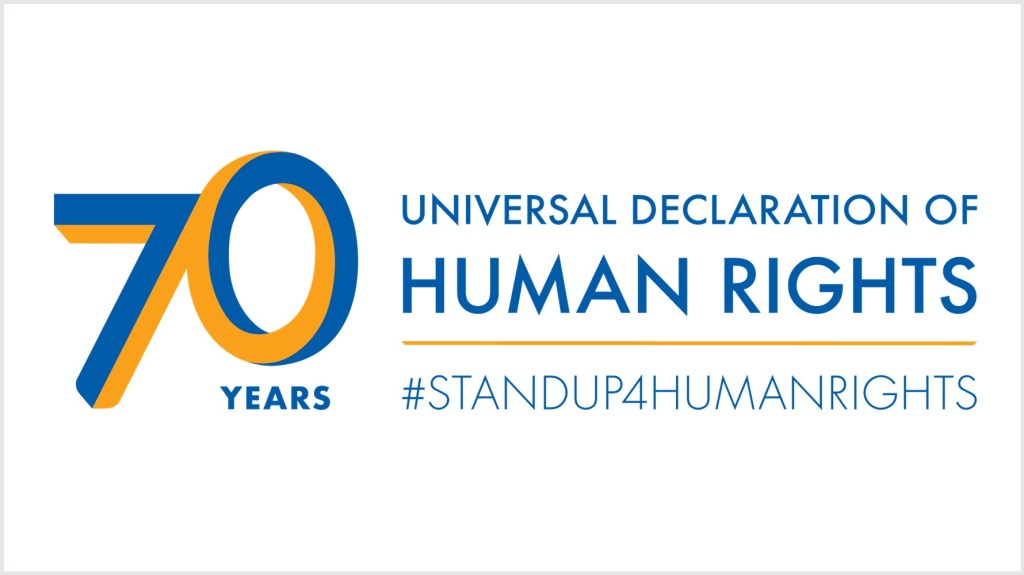
Free & equal – Supporting 70 years of the Universal Declaration of Human Rights
“To deny people their human rights is to challenge their very humanity.”
This quote from Nelson Mandela is the perfect opening to celebrate a very special day that we, at CWT, hold very dear: the Universal Declaration of Human Rights, which this year celebrates its 70 anniversary.
After the Second World War, a 10th of December of 1948 the United Nations General Assembly adopted the Universal Declaration of Human Rights. This document, drafted by representatives of diverse legal and cultural backgrounds from all regions of the world, sets out universal values and a common standard of achievement for all peoples and nations. It was the first declaration about the rights and freedoms of the individual to be adopted by the UN.
Since then, Human Rights Day is observed every year on that date to proclaim the inalienable rights which everyone is inherently entitled to as a human being – regardless of race, color, religion, sex, language, political or other opinions, national or social origin, property, birth or other status.
At CWT, we strongly believe in the role that companies play as corporate citizens, that is why human rights is one of the seven domains of our Responsible Business program. Within this area, there are two topics where we are actively taking action: diversity and inclusion, and fight against human trafficking.
Let me share with you some of our key achievements in these two fields in 2018:
- In regards to diversity and inclusion, we have created a global taskforce that has been key in advancing our strategy.
All our Talent Acquisition teams followed a non-discrimination training and we rolled out a mandatory module for top management to understand and avoid unconscious bias.
On International Women’s day, our Executive Leadership Team signed the UN’s Women’s Empowerment Principles and invited all the employees to adhere. - When it comes to fighting against human trafficking, we published a global Statement Against Slavery and Human Trafficking and continued to support and collaborate with our partners including the World Childhood Foundation, ECPAT, Thorn and Orphaned Starfish Foundation. We also updated our Responsible Supplier Code with anti-slavery and non-discrimination language.
We continued to create awareness internally by offering training to employees and externally through public leadership in events like the International Summit on Child Protection in Travel and Tourism, the End Violence Against Children Solutions Summit or the Trust Conference.
Recently we launched digital anti-trafficking ads on our client’s platform myCWT with a call to action to report signs of human trafficking and child sexual exploitation.
You can find more information about these actions in our latest Annual Responsible Business Report.
- In regards to diversity and inclusion, we have created a global taskforce that has been key in advancing our strategy.
-

Travel management of the future – 3-ways predictive analytics can transform your program
“If you can look into the seeds of time, and say which grain will grow and which will not, speak then unto me.”
If you’re a fan of Shakespeare, you will recognize this quote from Macbeth.
Since the beginning of time, humankind has been obsessed with predictions. Fortunately, nowadays we don’t need to rely on oracles or witches of any sort. We have powerful algorithms that allow us to predict the future and even change it.
How cool is that?
At CWT Solutions Group we have gone a step further when it comes to data management and created a powerful crystal ball to improve travel management and find new ways of saving.
How did we manage that? By integrating traditional travel data with public information on commodity prices, macroeconomic indicators, weather and even holidays. All of these are then analyzed to identify patterns and correlations, generating robust predictions for a company’s future spend, specifically the number of trips and cost per trip.
Thanks to these insights, our clients can make small changes to travel policies and supplier programs that can lead to great savings – up to 10% even.
If you also want to save that much, you can apply our tailored predictive modeling to your travel program by focusing on three key stakeholders: your travelers; your internal stakeholders – like directors, management, and finance teams – and your suppliers and procurement team.
When it comes to your travelers, you want to control costs, ensure your caps are matching the market conditions and make sure they use the right suppliers. To achieve these, you can:
- Communicate with defined traveler groups to let them know about price increases. Avoid non-compliance and encourage them to take actions to remain within the travel policy rules.
- Recommend the use of an alternative supplier or suggest they postpone the trip to other dates if they have flexibility in their travel plans.
- Blacklist suppliers expected to have fares increase, or with forecasted limited availabilities.
- Pro-actively adjust caps, upwards or downwards in order to drive your travelers towards suppliers not subject to rate increase.
Internal stakeholders are also key actors in your travel program equation and you want to support business leaders with budget planning and intelligence on future costs. You can make vast improvements in these areas:
- Better advice on the most relevant actions to take for their travel budget, especially if a destination where your company has business projects has been impacted.
- Insights on travel trends.
- Location for team meetings.
And last but not least, you have your suppliers and the procurement team. Here you want to be proactive when negotiating rates, and understand what market trends are likely to occur. To achieve that, you can:
- Use predictive analytics to adapt your negotiation strategy before, during and after agreements renewals.
- Make your supplier program better by managing the number of suppliers. You can do this by adding more suppliers, fares, classes, rate types, or ancillary and amenities and focus on the areas expected to increase.
- Adapt your negotiations targets and caps.
- Review your contractual goals (volume, market shares) set by the suppliers and monitor that your negotiated classes or rate types are available.
- Ensure your online booking tool matches your negotiation strategy and predictive analytics outcomes.
Follow these steps and become a true king of travel management – skipping all the drama of Shakespeare’s masterpiece.
-

CWT/Ambition research: More than three in four business executives prefer face-to-face meetings over virtual contact
According to a survey of over 1,100 business executives across several countries in Asia Pacific conducted by CWT, the global travel management company, and recruitment specialists Ambition, more than three quarters (78%) of businesspeople prefer meeting in-person to using technology-enabled communications such as video-conferencing.
Of those, nearly one in four (23%) said this is because it helps them build stronger, more meaningful relationships, 17% said they prefer to read people’s body language and facial expressions when in a meeting, and 15% said that they find it easier to get their point across and be persuasive face-to-face.
The 22% of respondents who said they prefer virtual meetings pointed to time and costs as the main reasons — 27% said so because it’s cheaper than travelling to attend meetings, and 35% said that saving time was a key benefit.
Face-to-face meetings are as essential as they are expensive
The vast majority (92%) of respondents, however, agreed there are tangible business benefits to face-to-face meetings that outweigh any cost savings achieved through technology-enabled meetings. Despite this, budget restrictions were the most commonly cited hurdle, with nearly two in five (38%) respondents saying this had prevented them from meeting face-to-face. Instating a travel freeze towards the end of the year is an annual ritual at many companies – it’s frequently used as a relatively painless mechanism to save money.
“A company-wide travel freeze may be short-sighted,” said Bindu Bhatia, Managing Director, Asia Pacific, Carlson Wagonlit Travel. “It can impede your employees from doing their jobs effectively, hurting the bottom line and your long-term business strategy. Business travel has long been viewed as a controllable or discretionary spend, when in fact there are many instances where it should be looked upon as a strategic investment to fuel business growth.”
Research by Oxford Economics USA found that for every dollar invested in business travel, companies realize $12.50 in incremental revenue.
“Instead of a blanket ban on travel, focused and targeted actions to limit travel and expense (T&E) spending – either with the type of travel, or departments that are not directly related to business growth – can provide better and more sustainable avenues of savings. It’s best to define essential and non-essential travel parameters and work from there,” said Bhatia. “At the same time, looking at employees’ travel purchase behaviors – such as how far in advance they make their bookings – can also cut costs.”
Measuring the return-on-investment of business travel
Only 28% of the respondents surveyed said their companies measure the return-on-investment (ROI) on their business travel spend. Nearly half (47%) said their companies don’t track the ROI on their business travel, while the remaining 25% were not sure.
“One of the key reasons companies struggle to measure the ROI on their travel spend is that travel data is still viewed in a vacuum,” said Michael Ryan, Managing Director, Australia & New Zealand, Carlson Wagonlit Travel. “Understanding the ROI on business travel means looking beyond just flight and hotel costs. Business travel should be viewed in the context of operations, revenue streams and human impact.”
“By combining travel data with HR, corporate finance and other data sources, you can begin to understand the true cost of a business trip versus the value it generates. For example, overlaying travel data with finance data can show you the correlation between travel and revenue growth, and you can see what impact cutting the travel budget for a particular department would have on the business.”
Designing better travel policies to attract and retain talent
Similarly, overlaying travel data with HR data lets companies see how their travel policies affect employee productivity and well-being. For example, there may be certain trips where it makes sense to let employees fly business class if it means they can work during the flight. Organizations can also look into the relationship between business travel and employee illness or staff turnover, and then take appropriate action such as giving employees time off after certain business trips.
More than three in five (61%) respondents to the survey said they factor in a company’s travel policy when evaluating a new job opportunity. This pattern is even more pronounced with road warriors who have taken more than 10 trips in the past year – close to three quarters (71%) said corporate travel policies influence their job search.
“In the face of a growing global talent shortage, attracting and retaining the right people can be challenging, especially if candidates are receiving multiple offers,” said Paul Endacott, Regional Managing Director, Asia, Ambition. “Fast-growing Asian-headquartered companies which are expanding internationally and trying to compete with established global players are acutely aware of this. Well-designed corporate travel policies can be a selling point and help these companies differentiate themselves to potential employees, particularly in industries like financial services, technology, supply chain management and procurement, which involve a lot of travel.”
The complete set of findings from the survey are available in the “Gain the Advantage With Face-to-Face Meetings” research paper.
About the survey
To understand the business travel preferences and behaviors of businesspeople in Asia Pacific, Carlson Wagonlit Travel and Ambition surveyed 1,160 executives across various markets in Asia Pacific including Australia, Hong Kong, Singapore and Malaysia.
The majority of respondents (62.34%) were in senior leadership or client-facing roles. All the respondents were required to have made at least one business trip within the past 12 months.
Carlson Wagonlit Travel
Companies and governments rely on us to keep their people connected. We provide their travelers with a consumer-grade travel experience, combining innovative technology with our vast experience. Every day, we look after enough travelers to fill more than 260 Boeing 787s and 100,000 hotel rooms – and handle 105 events. We operate in around 150 countries, and in 2017 posted a total transaction volume of more than US$ 23 billion.
Ambition
Ambition was founded in Australia in 1999 with a belief that whilst we didn’t want to reinvent the wheel, we did feel that there was a tremendous opportunity to carve a niche of our own in the recruitment market and build a special organization.
Now we are a leading global boutique recruitment business servicing specialist markets in key international cities; London, Kuala Lumpur, Hong Kong, Singapore, Sydney, Brisbane, and Melbourne.
We are experts in Technology. Digital, Banking & Financial Services, Finance & Accounting, Sales & Marketing and Supply Chain & Procurement recruitment.
-
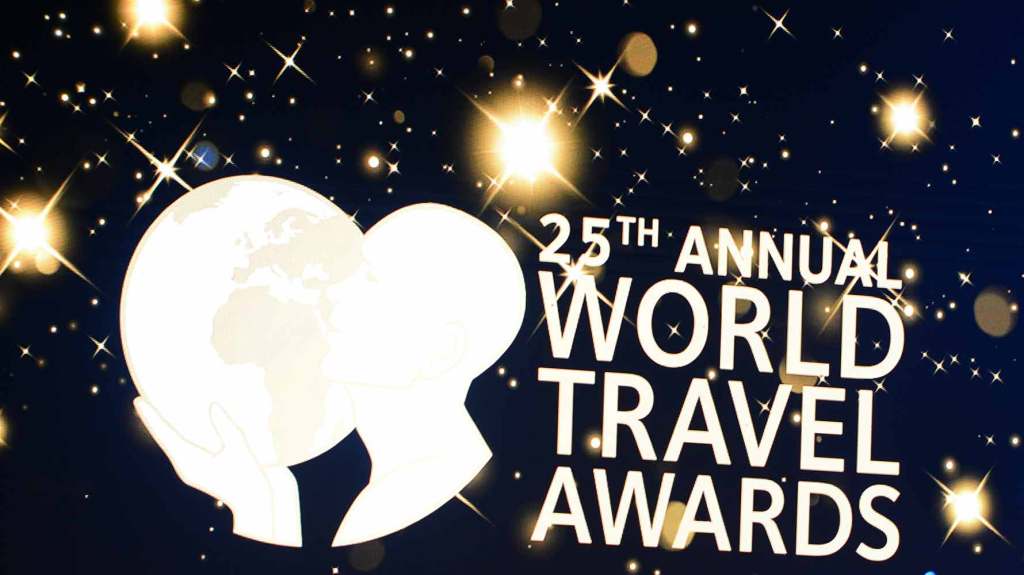
CWT wins “World’s Leading Business Travel Agency 2018” at the World Travel Awards
Carlson Wagonlit Travel, the global travel management company, was awarded “World’s Leading Business Travel Agency 2018” and “Europe’s Leading Travel Agency 2018” at the World Travel Awards ceremony, which took place in Lisbon on 1 December. CWT beat a shortlist of eight to take the prize.
CWT was also nominated for World’s Leading Destination Management Company 2018, World’s Leading Integrated Tourism Group 2018, World’s Leading Travel Agency 2018, World’s Leading Travel Management Company 2018, Asia’s Leading Integrated Tourism Group 2018, Asia’s Leading Travel Management Company 2018, Europe’s Leading Travel Management Company 2018, North America’s Leading Travel Management Company 2018 and South America’s Leading Travel Management Company 2018.
Carlson Wagonlit Travel
Companies and governments rely on us to keep their people connected. We provide their travelers with a consumer-grade travel experience, combining innovative technology with our vast experience. Every day, we look after enough travelers to fill more than 260 Boeing 787s and 100,000 hotel rooms – and handle 105 events. We operate in around 150 countries, and in 2017 posted a total transaction volume of more than US$ 23 billion.
-

Prawn cocktail? – Here’s how to cater events for a foodie generation
Once upon a time the term foodie was associated with high culture and an elite fortunate enough to eat Michelin Starred chef-d’oeuvres while the rest of us ate cold sandwiches.
But the frenzy for fine cooking has seen dramatic growth and democratization on a global scale. While Gen Xers have embraced the trend with fervor, millennials have made of it a true religion and are using social media to apostolate obscure kombucha brands, Peruvian small plates and artful acai bowls. They’re flocking to cooking classes thanks to the likes of Airbnb Experiences and demanding food that caters to specific diets. The research firm Mintel reports a 92% rise in vegan products globally since 2014.
We are also spending a good portion of our earnings on dining experiences so when it comes to events, it’s no wonder our expectations are higher than ever before.
As reported in our M&E trends report, 2019 will be all about the attendee experience. If you’re an event organizer, you won’t be able to get away with bland buffets and prawn cocktail anymore.
Be fearless and invest time and money on thinking about food and beverage. Build imaginative and mouth-watering menus that will delight your audience. If things go haywire, at least they will remember the great food and you will get priceless Instagram likes out of your event.
Here are some tips you might want to consider if you want to be successful in catering for a foodie generation:
- Be creative. Go beyond traditional proposals and try a more adventurous mix. We live in the era of fusion where attendees are as familiar with poke bowls as regional Spanish tapas so go for new dishes to surprise your attendees.
- Be bold. You can even go extreme and propose something in the line of grasshopper tacos. Edible insects might not be everyone’s cup of tea, but you will generate some excitement and a great conversation topic for networking during the breaks.
- Be conscious. The demand for healthy and sustainably-sourced food is skyrocketing. Go for healthy, tasty and responsible options. Your audience will love it.
- Go local. One of the joys of traveling is tasting the local cuisine and discovering new flavors. Remember how sad your life was before discovering chili crab, gazpacho, ceviche, and arepas? Give attendees the chance to enjoy local dishes. Even if they’ve tried the dish before, it will taste better than any version sampled abroad.
- Be neat. Work on presentation – Desserts presented Cake Boss style, small nibbles in beautiful ceramic bowls, artfully carved vegetables… Amaze with your set-up skills and pictures of your event will hit social media like a storm.
- Embrace festivalization – It’s a trend for next year, so go for food trucks or stalls to get that festive feel.
- Think of activities around food – Plug into a worldwide Master Chef frenzy, with activities around food. Allow your attendees to learn how to cook a local dish or do tastings in the finest eateries. Your audience will bond over trying to fold a dumpling properly or identify an unlabeled wine, and talk about your event long after it’s over.
